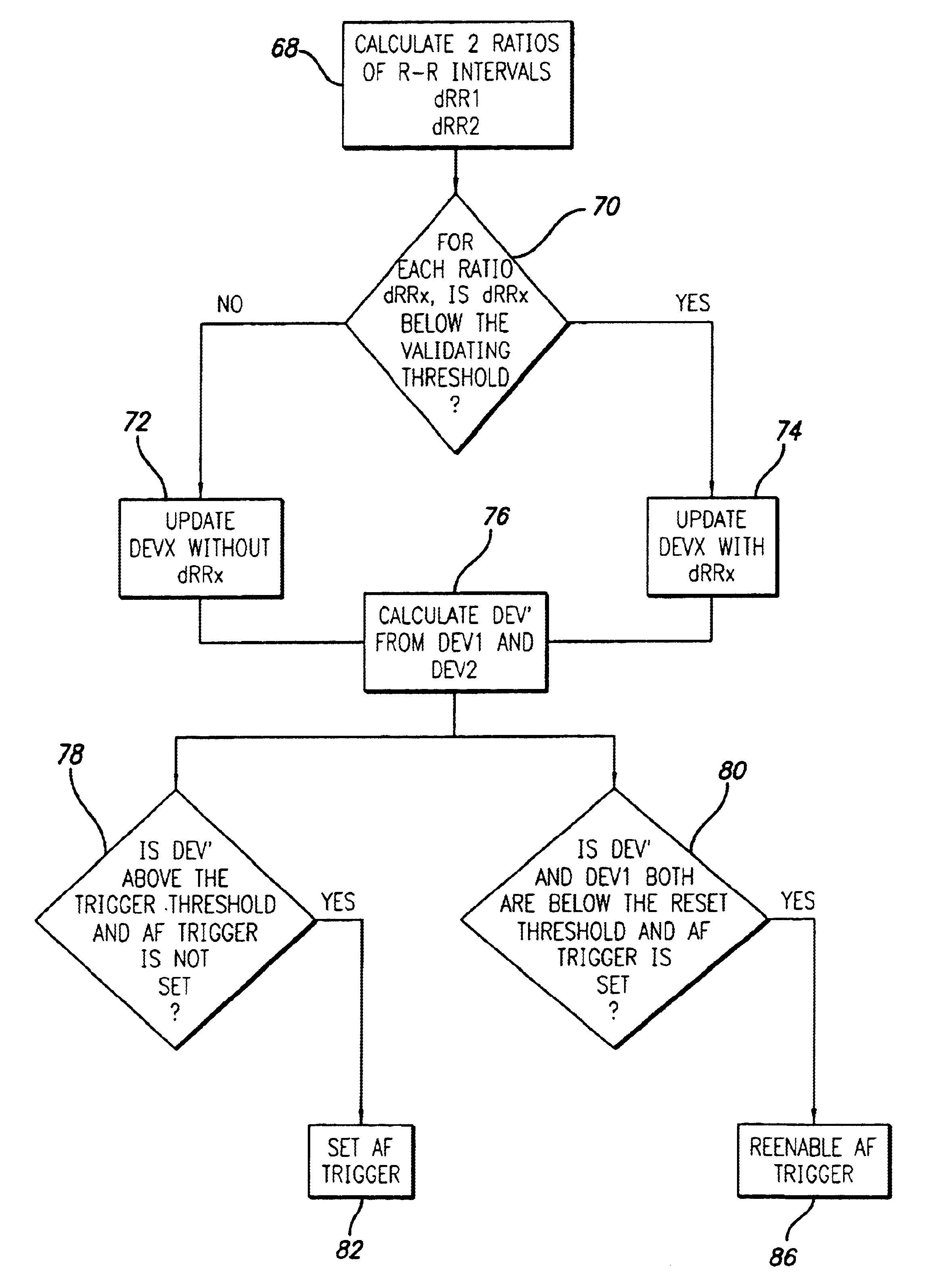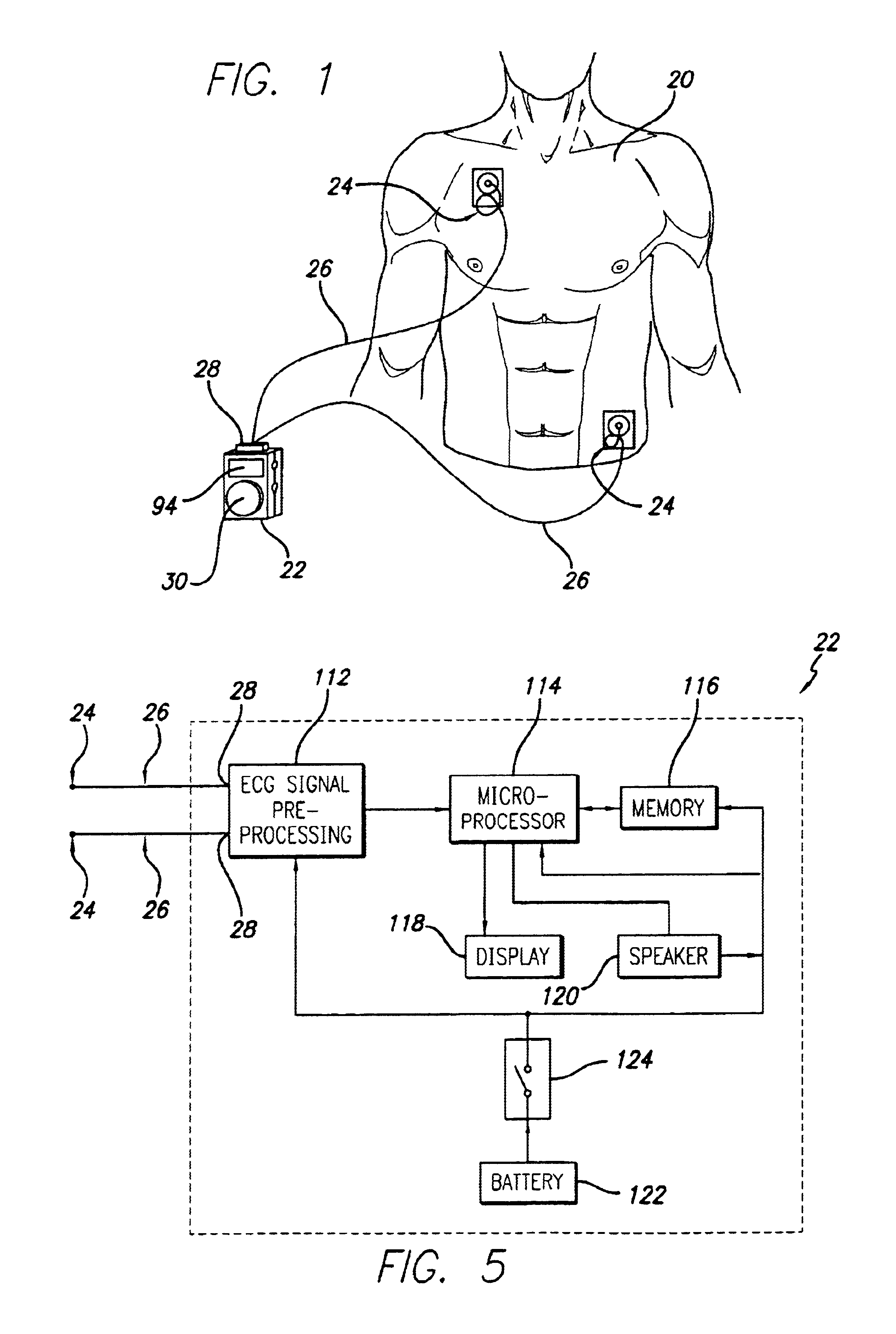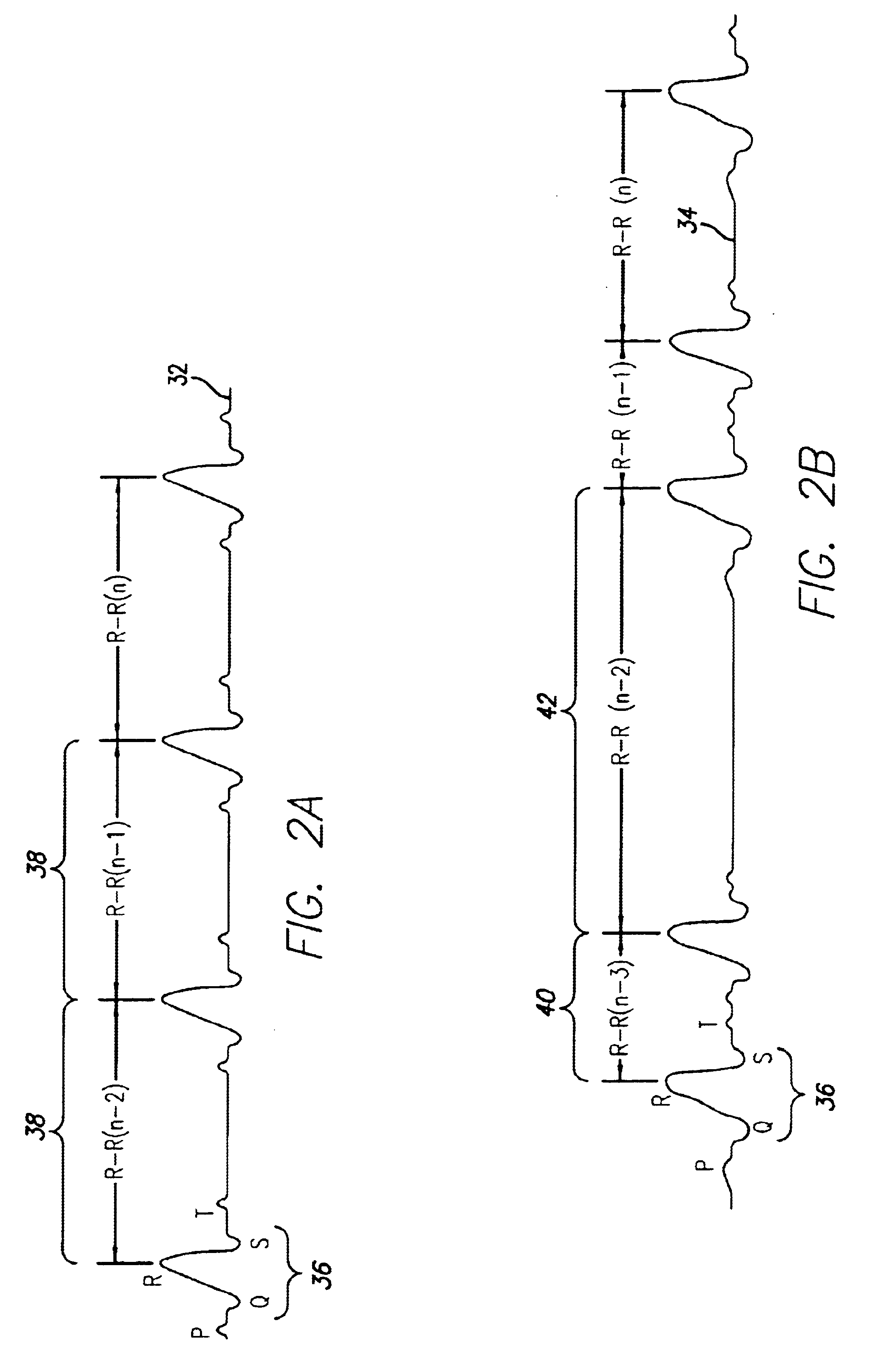Portable ECG monitor and method for atrial fibrillation detection
a portable, atrial fibrillation technology, applied in the field of portable ecg monitors and methods for atrial fibrillation detection, can solve the problems of limited digital storage or memory, atrial fibrillation is a potentially life-threatening irregular cardiac rhythm, and the sophisticated system has not been found to be readily adaptable, so as to reduce the number of false atrial fibrillation detections and reduce the number of patients who miss the atrial fibrillation detection.
- Summary
- Abstract
- Description
- Claims
- Application Information
AI Technical Summary
Benefits of technology
Problems solved by technology
Method used
Image
Examples
Embodiment Construction
Referring now to the drawings with more particularity, wherein like reference numerals in the separate views indicate like or corresponding elements, there is shown in FIG. 1 a patient 20 having a portable ECG event monitor and recorder unit 22. The portable event recorder 22 is battery powered and may be manufactured in accordance with many such units that exist today. The event recorder may be mounted to the belt of the patient 20 as shown or be suspended about the neck of the patient with a lanyard and may take the form of a small pager-shaped device that is continually connected to the patient's chest skin via electrodes 24 and a lead set 26, as shown. In this case a set of two electrodes 24 are attached to the patient's chest area by means known well to those skilled in the art. Other electrode configurations are equally applicable. The electrodes are used to receive signals indicative of electro-cardiac activity of the patient. A single channel ECG implementation is shown here...
PUM
 Login to View More
Login to View More Abstract
Description
Claims
Application Information
 Login to View More
Login to View More - R&D
- Intellectual Property
- Life Sciences
- Materials
- Tech Scout
- Unparalleled Data Quality
- Higher Quality Content
- 60% Fewer Hallucinations
Browse by: Latest US Patents, China's latest patents, Technical Efficacy Thesaurus, Application Domain, Technology Topic, Popular Technical Reports.
© 2025 PatSnap. All rights reserved.Legal|Privacy policy|Modern Slavery Act Transparency Statement|Sitemap|About US| Contact US: help@patsnap.com



